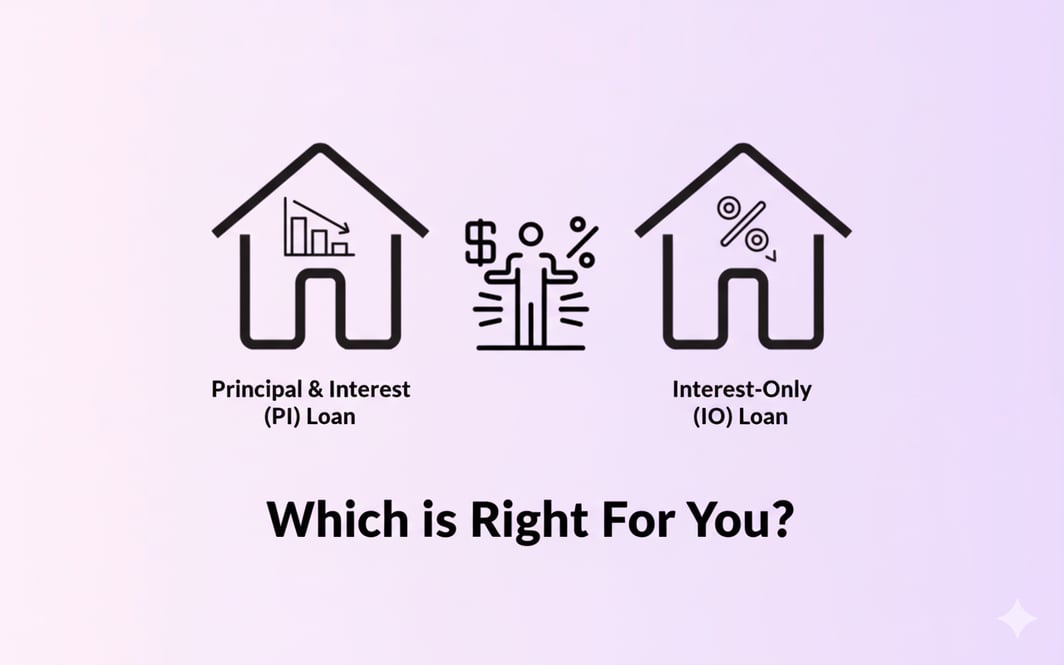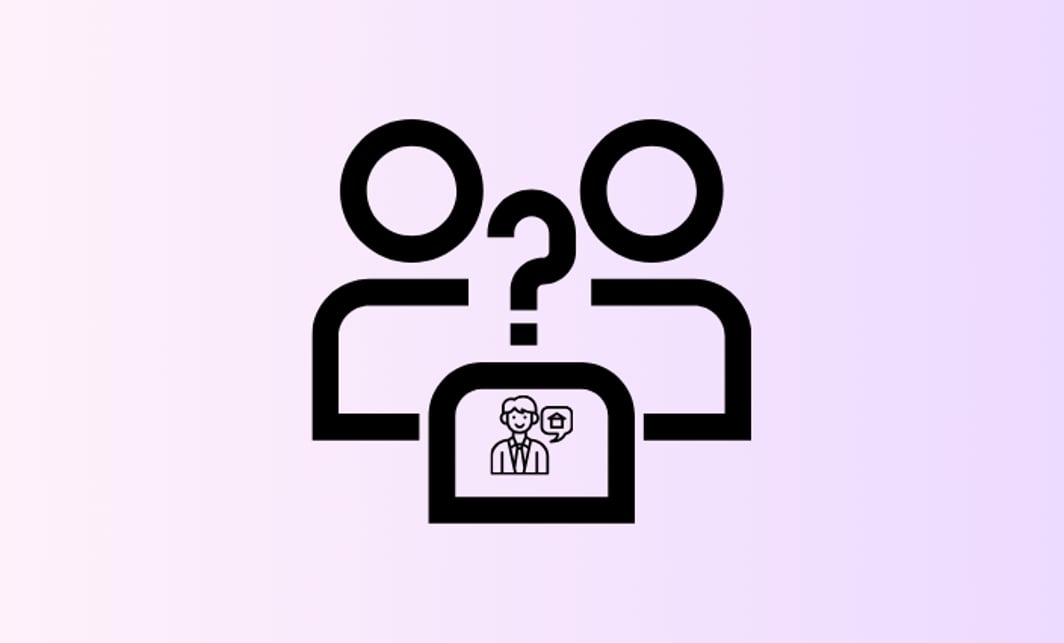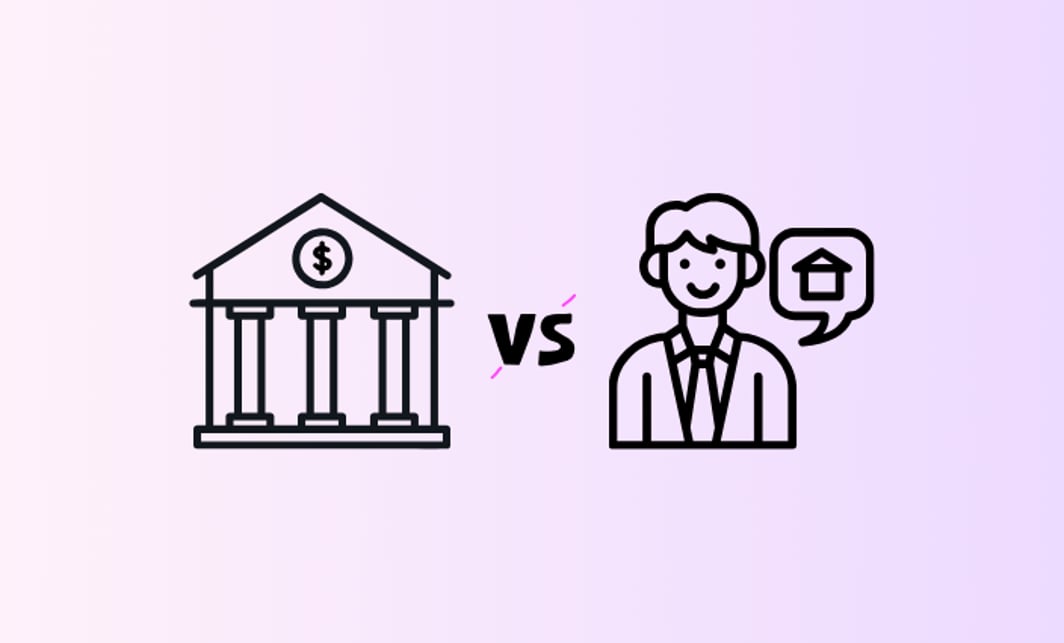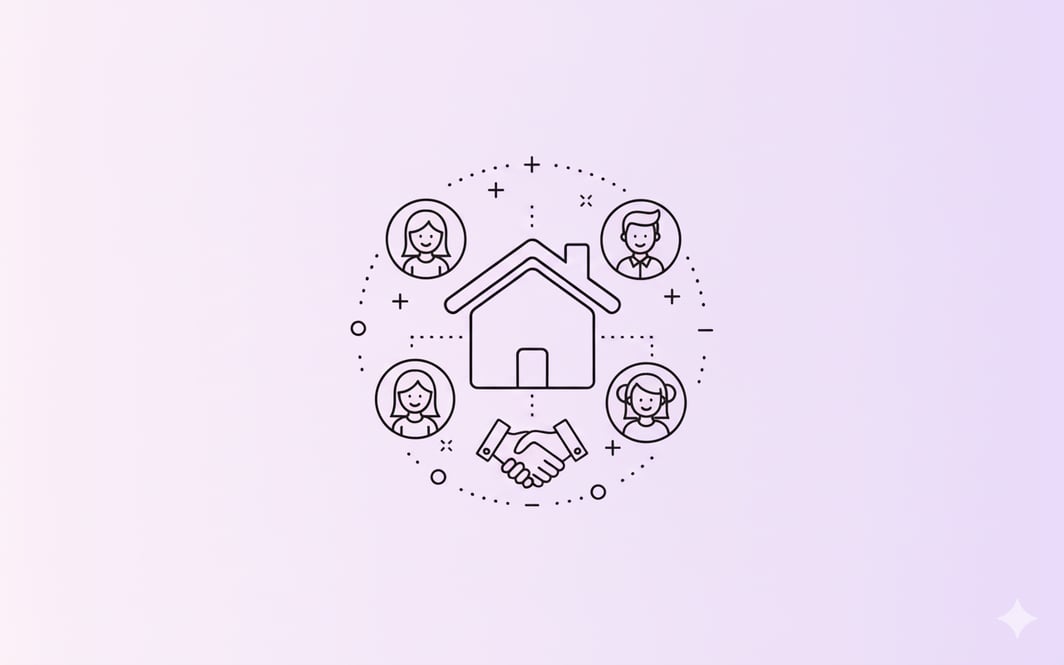Why Loan structure matters more than ever in 2025
Choosing the right home loan repayment type is more critical than ever in 2025, as Australian borrowers navigate a complex mortgage landscape shaped by evolving interest rates, regulatory shifts, and housing market dynamics. Whether you're a first-time buyer or an experienced investor, understanding the differences between principal and interest (P&I) home loans and interest-only (IO) home loans can save you thousands in interest and help align your mortgage with your financial goals.
The ongoing adjustments from the Reserve Bank of Australia (RBA), plus tighter lending criteria enforced by APRA and ASIC, mean borrowers must carefully evaluate P&I vs IO loans for affordability, risk, and long-term wealth creation. This comprehensive guide unpacks everything you need to consider when deciding should I get an interest-only loan or opt for a principal and interest loan in 2025.
What is a Principal and Interest (P&I) loan?
A principal and interest loan requires repayments that cover both the interest charged on the outstanding loan balance and a portion of the principal (the original amount borrowed). Each repayment reduces your loan balance, helping you build equity over time.
Key characteristics of P&I loans:
- Steady reduction of debt principal.
- Higher initial repayments compared to IO loans.
- Lower total interest paid over the life of the loan.
- Builds home equity, which can improve net worth.
- Generally preferred by owner-occupiers focused on long-term homeownership.
In 2025, with home loan interest rates gradually easing but still significant, P&I loans remain the most cost-effective structure for borrowers aiming to reduce debt steadily and avoid repayment shocks .
What is an Interest-Only (IO) loan?
An interest-only home loan requires repayments only on the interest charged for a set period (often 1–5 years), with no principal reduction during this time. After the IO period ends, repayments usually switch to P&I, which can cause a significant jump in monthly payments.
Key characteristics of IO loans:
- Lower initial repayments during the interest-only period.
- Principal remains unchanged, so no equity is built during this phase.
- Popular with property investors leveraging tax deductibility.
- Higher total interest costs due to delayed principal repayment.
- Subject to stricter lending criteria and caps by regulators in 2025.
Borrowers often ask, "Should I get an interest-only loan?" The answer depends on your cash flow needs, investment strategy, and risk tolerance, especially given the evolving market and regulatory environment.
P&I vs IO: Key differences at a glance
Interest-Only Pros and Cons in 2025
Pros
- Lower initial repayments improve short-term cash flow, useful for investors or those managing multiple properties.
- Potential for tax deductions on interest payments for investment properties.
- Flexibility to allocate funds elsewhere (e.g., renovations, investments).
- Useful for debt recycling strategies to manage tax and finances more efficiently.
Cons
- No reduction in principal means higher total interest costs over the loan life.
- Potential for repayment shock when the IO period ends and repayments switch to P&I.
- Stricter regulatory caps limit availability, especially for high LVR loans.
- Often comes with higher interest rates and fees compared to P&I loans.
- Risk of negative equity if property values fall during the IO period.
When to choose P&I vs IO: Buyer types, goals, and cash flow needs
Who should consider a Principal and Interest loan?
- Owner-occupiers prioritising equity building and long-term financial security.
- Borrowers with stable income who can afford higher repayments.
- Those looking to minimise total interest paid over the loan term.
- First-home buyers aiming for gradual wealth accumulation.
Who should consider an Interest-Only loan in 2025?
- Property investors focused on maximising cash flow and leveraging tax deductions.
- Borrowers anticipating increased income or capital gains in the near future.
- Individuals undertaking debt recycling or complex investment strategies.
- Those temporarily needing lower repayments, such as during property transitions.
What’s Changing in 2025? RBA, APRA, and Lending Trends
Reserve Bank of Australia (RBA) Monetary Policy
The RBA has signaled a cautious easing of the cash rate in 2025, with forecasts suggesting gradual cuts from 4.3% in 2024 to approximately 3.2% by mid-2026. This is expected to reduce borrowing costs and stimulate dwelling investment and consumption [5].
Regulatory Environment
- APRA maintains caps on new IO lending at 30% of total residential loans, with tighter restrictions on IO loans exceeding 80% LVR. This limits IO loan availability and enforces stricter borrower eligibility.
- ASIC continues to emphasise responsible lending and transparency, affecting lender policies and borrower disclosures.
- Lenders apply stricter serviceability assessments, particularly for IO loans, requiring borrowers to prove capacity to switch to P&I repayments after the IO period.
Australian Mortgage Trends 2025
- The market shows modest growth in owner-occupier loans but cautious investor lending.
- Offset accounts and redraw facilities are increasingly popular, encouraging borrowers towards P&I loans for equity building and interest cost management.
- Lending indicators reveal a slight softening in overall loan commitments, reflecting borrower caution amid regulatory changes.
Refinancing from IO to P&I — What to Expect
Many borrowers with existing IO loans face the challenge of transitioning to P&I repayments once their IO period ends or when lenders require them to refinance.
Key Considerations:
- Repayment shocks: Monthly repayments can increase significantly when switching to P&I.
- Lenders conduct rigorous assessments to confirm serviceability on a P&I basis.
- Refinancing may involve higher interest rates or fees if credit conditions tighten.
- Borrowers should plan early and consider refinancing options to smooth the transition and avoid financial stress.
Mortgage brokers recommend regular loan health checks to evaluate if switching is beneficial and to explore competitive refinancing offers.
Fixed vs Variable Loans with IO or P&I
Fixed-Rate Loans
- Provide repayment certainty with stable interest rates for a fixed term.
- Popular among borrowers seeking to lock in rates amid rate fluctuations.
- Fixed IO loans can offer predictable interest payments but limit flexibility.
Variable-Rate Loans
- Allow for rate changes aligned with RBA movements.
- Offer features like offset accounts and redraw facilities, preferred with P&I loans for flexibility and interest savings.
- Borrowers can make additional repayments without penalty, accelerating principal reduction.
In 2025, variable-rate loans paired with P&I repayment structures are increasingly favoured due to flexibility and tools that help manage interest costs effectively.
Case Studies and Scenarios
Scenario 1: First-Home Buyer (Owner-Occupier)
- Prefers a P&I loan to steadily build equity.
- Can afford higher repayments due to stable income.
- Benefits from offset accounts to reduce interest.
- Avoids IO loans due to repayment shocks and long-term higher costs.
Scenario 2: Property Investor
- Opts for an IO loan during the initial investment phase to maximise cash flow.
- Plans to refinance to P&I after capital growth or income increase.
- Uses tax benefits on interest payments.
- Must consider tighter IO lending criteria and potential rate premiums.
Scenario 3: Borrower Refinancing from IO to P&I
- Faces higher repayments post-IO period.
- Seeks mortgage broker advice to explore refinancing options.
- Might switch to a variable P&I loan with offset features to improve flexibility and manage repayments.
Which loan structure is best for you in 2025?
Choosing the best loan structure in 2025 depends on your financial goals, cash flow needs, and risk tolerance:
- Principal and interest loans offer long-term savings, equity building, and financial security, making them ideal for owner-occupiers and conservative investors.
- Interest-only loans provide short-term repayment relief and tax advantages, suited for investors or borrowers with specific cash flow strategies but come with higher costs and risks.
- Regulatory and market trends in 2025 favour P&I loans due to tighter IO lending restrictions and evolving borrower protection measures.
- Utilise features like offset accounts and redraw facilities to optimise your loan structure.
- Consult a mortgage broker or financial advisor to tailor your home loan strategy to your unique circumstances.
For a practical assessment, use our free loan health check to evaluate your current loan structure and identify opportunities to improve your mortgage outcomes in 2025.
Frequently Asked Questions (FAQs)
While interest-only loans offer lower initial repayments and short-term cash flow benefits, principal and interest loans are generally better for long-term financial health due to equity building and lower total interest costs.




